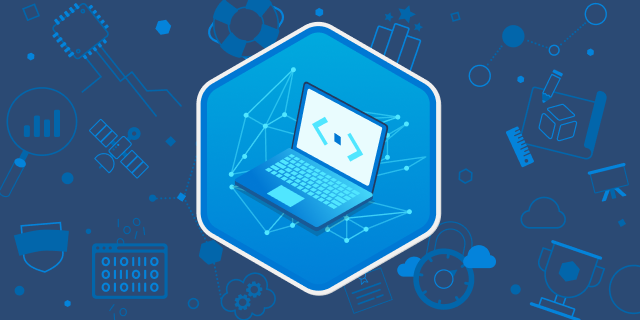Blockchain technology is revolutionizing how we handle data, offering decentralized and secure solutions for various industries. In 2025, block chain development continues to grow with new tools and strategies emerging for developers.
Why Blockchain Development is Booming in 2025
Blockchain is finding applications in many areas such as finance, healthcare and supply chains. It allows for secure, transparent and efficient transactions without intermediaries. In 2025, trends like Decentralized Finance (DeFi) and Non-Fungible Tokens (NFTs) are pushing blockchain to new heights. As technology advances, staying updated with the latest tools and strategies becomes essential for success.
Essential Tools for Blockchain Development in 2025
1. Smart Contract Development Tools:
Solidity is the main programming language for Ethereum smart contracts constantly evolving to make it easier to write secure and efficient code. Hardhat assists developers with testing and deploying contracts offering advanced features like debugging and automation. Truffle Suite provides an all-in-one solution to streamline the development, testing and deployment process. Making it easier for developers to manage the full blockchain development lifecycle.
2. Blockchain Platforms:
Ethereum remains the leading platform for decentralized applications (dApps) continuously improving in scalability and security. Binance Smart Chain (BSC) offers a faster and more cost-effective alternative to Ethereum making it ideal for certain types of projects. Meanwhile, Polkadot and Cosmos are designed to enhance cross-chain interoperability enabling different blockchains to communicate and work together seamlessly.
These platforms provide diverse options for developers depending on their project’s specific needs. When choosing the right platform, working with the best blockchain development companies can help you navigate these options and select the most suitable one for your project.
3. Wallet and Security Tools:
Metamask is a browser extension wallet that enables developers to interact with decentralized applications (dApps) securely. It acts as a bridge between the user’s browser and the blockchain allowing for easy transactions. OpenZeppelin, on the other hand, provides essential libraries for building secure smart contracts, helping developers prevent vulnerabilities and ensuring the safety of their blockchain applications. These tools are vital for building robust, secure decentralized systems.
With the right tools, blockchain development can be more efficient and secure, leading to better and faster solutions in 2025.
Strategies for Successful Blockchain Development in 2025
Blockchain development has come a long way, and to succeed in 2025, developers need to follow key strategies to ensure their projects are secure, scalable, and efficient. Here’s a breakdown of the essential strategies for blockchain development.
Planning and Requirements Gathering
The first step in any blockchain project is understanding the problem you want to solve. Blockchain should be used for specific needs, like improving transparency, reducing fraud, or enhancing cloud communication. Developers must also define clear goals and identify their target audience. It’s important to choose the right type of blockchain, whether public, private, or hybrid, based on the project’s needs. A well-structured plan sets the foundation for a successful blockchain solution.
Prioritizing Security
Blockchain security is crucial. Smart contracts—self-executing contracts with the terms directly written into code—are a key feature of blockchain, but they can have vulnerabilities. It’s important to conduct security audits regularly to catch any weaknesses. Developers should also follow best practices to prevent issues, such as writing clean, readable code and using secure coding tools.
Scalability and Performance Optimization
As blockchain applications grow, handling large volumes of transactions becomes challenging. One way to solve this is by using Layer 2 solutions like state channels, which help offload some of the transactions. Sharding is another strategy that divides the blockchain into smaller pieces, improving performance. Choosing the right consensus algorithm (e.g., Proof of Stake or Proof of Authority) ensures that the system remains fast and scalable.
Embracing Cross-Chain Interoperability
Platforms like Polkadot and Cosmos focus on enabling different blockchains to work together. This is called interoperability, and it allows users and developers to interact with multiple blockchains seamlessly, enhancing the usability of blockchain applications.
Staying Updated with Industry Trends
Blockchain technology is evolving rapidly, so it’s essential to stay informed. Attending conferences, webinars, and joining developer communities like Reddit and GitHub can help you learn new trends and best practices.
By following these strategies, developers can build successful blockchain projects that are secure, scalable, and future-proof.
Future Outlook on Blockchain Development Tools and Strategies
As blockchain technology evolves, so do the tools and strategies developers use to create innovative solutions. Looking ahead to 2025 and beyond, several exciting trends are shaping the future of blockchain development.
Emerging Tools in 2025 and Beyond
In the coming years, we can expect AI-powered tools to play a major role in blockchain development. These tools will help developers write more efficient code, predict system behavior, and identify vulnerabilities in smart contracts. With AI, blockchain development could become faster and more secure, allowing developers to focus on building complex decentralized applications (dApps) without worrying about bugs or security flaws.
The Role of Quantum Computing
Quantum computing has the potential to change blockchain technology dramatically. While it is still in its early stages, quantum computers could potentially break the encryption methods that secure blockchain networks today. As quantum computing becomes more advanced, developers will need to adapt blockchain systems to use new encryption methods that are resistant to quantum attacks. This will be a major area of focus in the coming years to ensure blockchain’s security remains strong.
Conclusion
Blockchain development tools and strategies are evolving rapidly. From AI-driven tools to the integration of quantum-resistant encryption, blockchain technology is becoming more powerful and secure. Developers who invest in the right tools and strategies will be well-positioned to create successful blockchain projects. The key is to stay innovative, explore new technologies, and keep experimenting with different solutions to drive progress.

